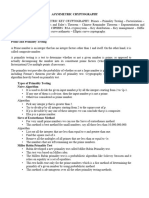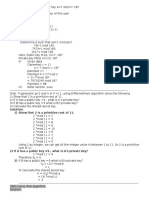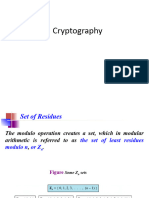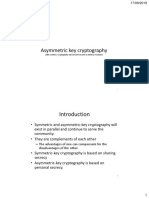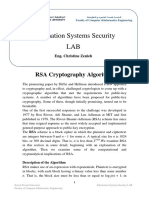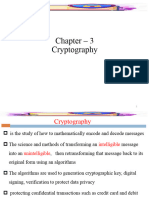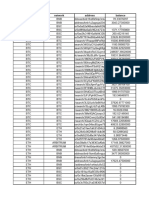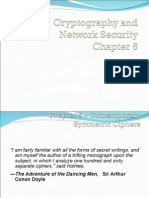0% found this document useful (0 votes)
45 views11 pagesCryptography Math
The document outlines various cryptographic protocols and calculations, including the Diffie-Hellman Key exchange, Vernam Cipher, Playfair method, and RSA encryption and decryption processes. It provides step-by-step calculations for generating public and private keys, encoding and decoding messages, and confirming the correctness of the keys. Additionally, it includes examples of ciphertext decryption using RSA with given public keys.
Uploaded by
sadhukhansoumya7319Copyright
© © All Rights Reserved
We take content rights seriously. If you suspect this is your content, claim it here.
Available Formats
Download as PDF, TXT or read online on Scribd
0% found this document useful (0 votes)
45 views11 pagesCryptography Math
The document outlines various cryptographic protocols and calculations, including the Diffie-Hellman Key exchange, Vernam Cipher, Playfair method, and RSA encryption and decryption processes. It provides step-by-step calculations for generating public and private keys, encoding and decoding messages, and confirming the correctness of the keys. Additionally, it includes examples of ciphertext decryption using RSA with given public keys.
Uploaded by
sadhukhansoumya7319Copyright
© © All Rights Reserved
We take content rights seriously. If you suspect this is your content, claim it here.
Available Formats
Download as PDF, TXT or read online on Scribd
/ 11









